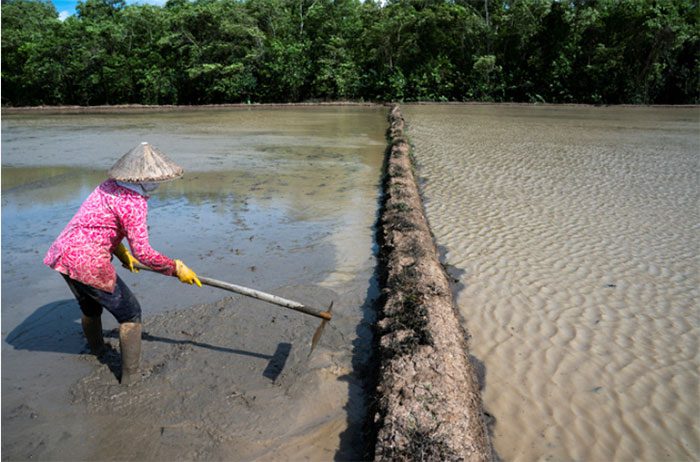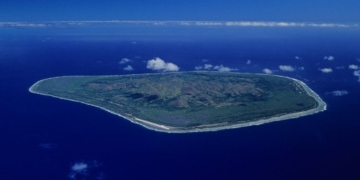Research indicates that 50,000 large dams worldwide may lose over a quarter of their capacity by 2050 due to sediment accumulation, threatening global energy security and water resources, as reported by the United Nations on January 12.
The UN study suggests that the capacity of these dams is expected to decline from 6,000 trillion cubic meters to 4,655 trillion cubic meters by 2050. The study calls for global action to address this issue and protect vital storage infrastructure.

Farmers cultivating fields in Soc Trang province, Mekong Delta, Vietnam, in May 2022. Soc Trang is located in an area affected by the sediment decline of the Mekong River due to upstream hydropower dam construction – (Photo: REUTERS).
Sediment accumulation in reservoirs disrupts natural water flow. This sediment can damage hydroelectric turbines and impact power generation.
The blocking of sediment flow by dams can also make upstream areas more prone to flooding and erode habitats downstream.
According to Reuters, the UN study examined data from over 47,000 dams in 150 countries and noted that 16% of initial capacity has already been lost.
Additionally, the United Nations reported that the United States is facing a projected loss of 34% by 2050, while Brazil is estimated to lose 23%, India 26%, and China 20%.
Many experts have long warned that dams may cause greater societal and environmental costs than the benefits they provide.
Vladimir Smakhtin, one of the study’s authors, stated that the construction of dams worldwide has significantly decreased. According to this director of the United Nations University Institute for Water, Environment and Health, approximately 50 dams are built each year now, down sharply from 1,000 per year in the mid-20th century.
“We should now be asking what alternatives to dams exist, including for energy generation, as they are being phased out,” Smakhtin said.
China continues to construct dams on major rivers. Hydropower is a crucial part of the country’s plan to reduce fossil fuel use and control greenhouse gas emissions. However, projects like the Three Gorges Dam—the largest hydropower project in the world—have caused significant social and environmental issues.
According to a study published by Reuters last year, dams built by China on the Mekong River have also disrupted the flow of sediment into downstream countries, altering landscapes and jeopardizing the livelihoods of millions of farmers.


















































